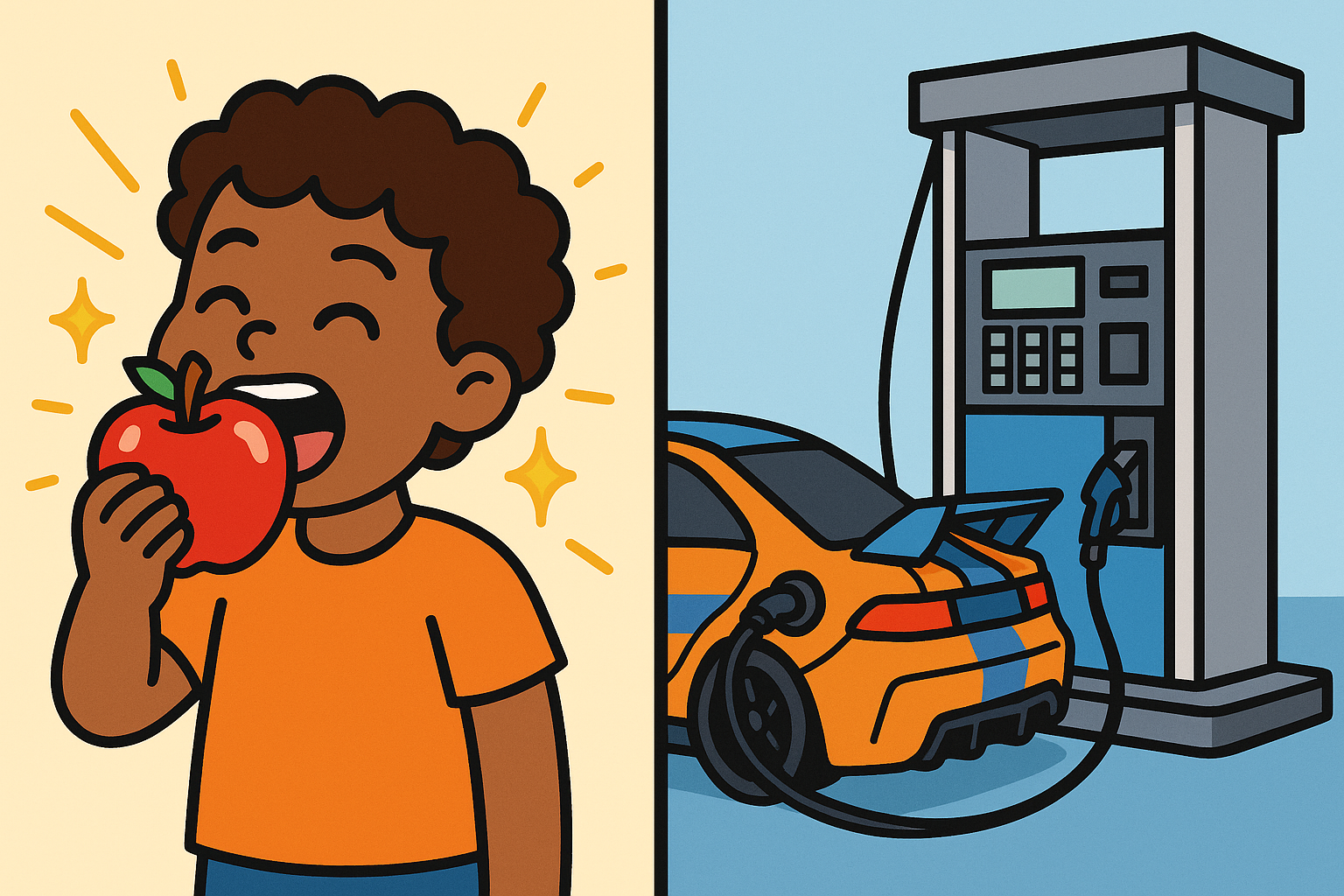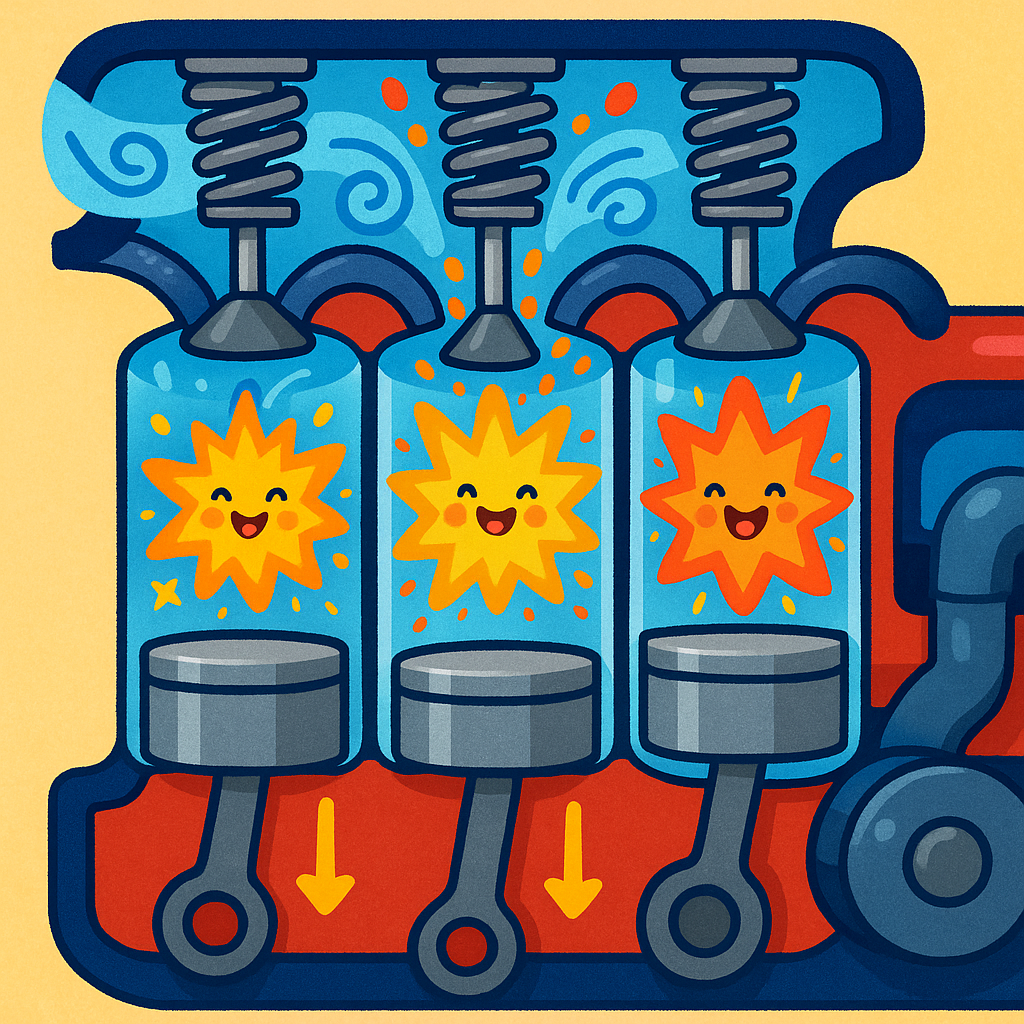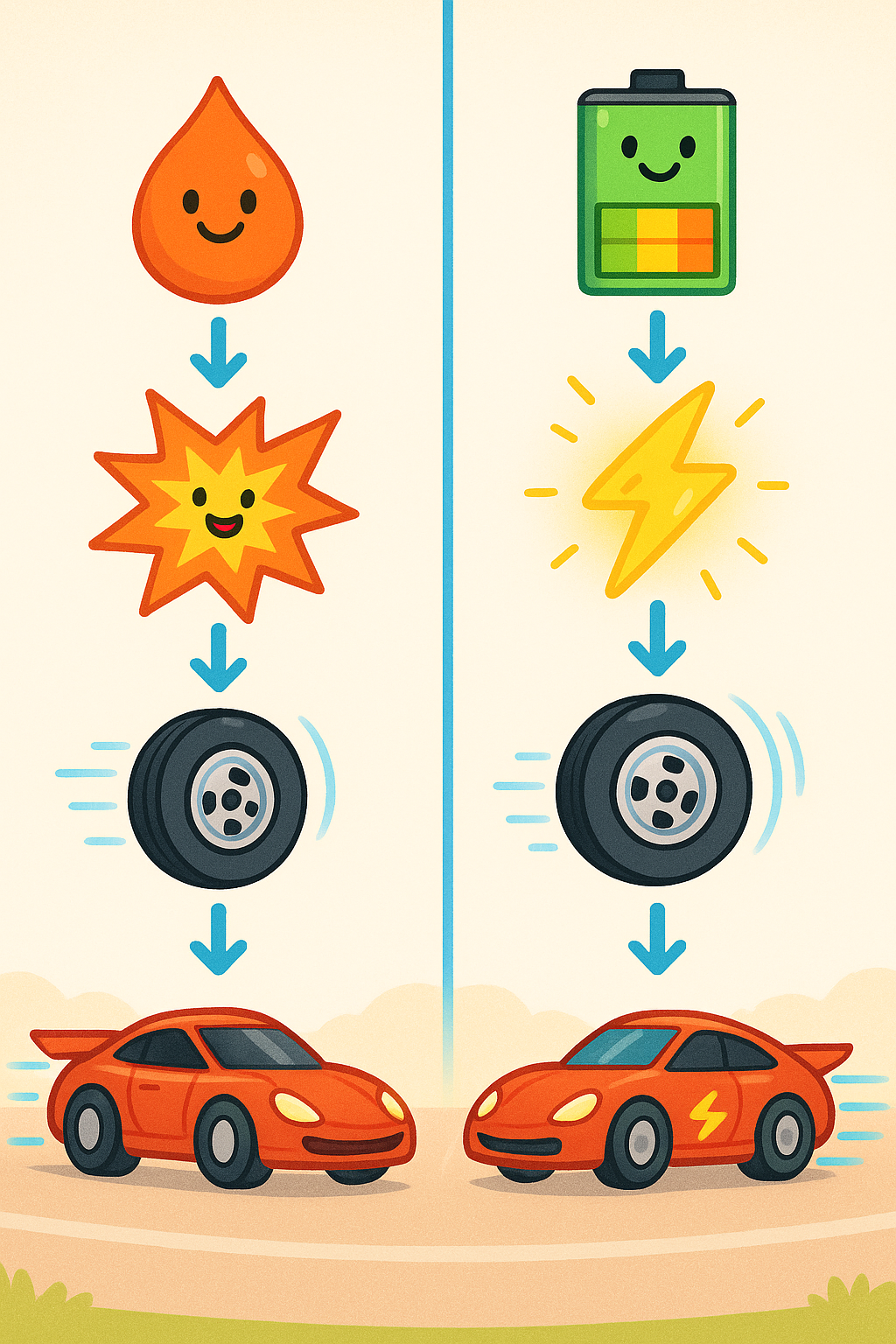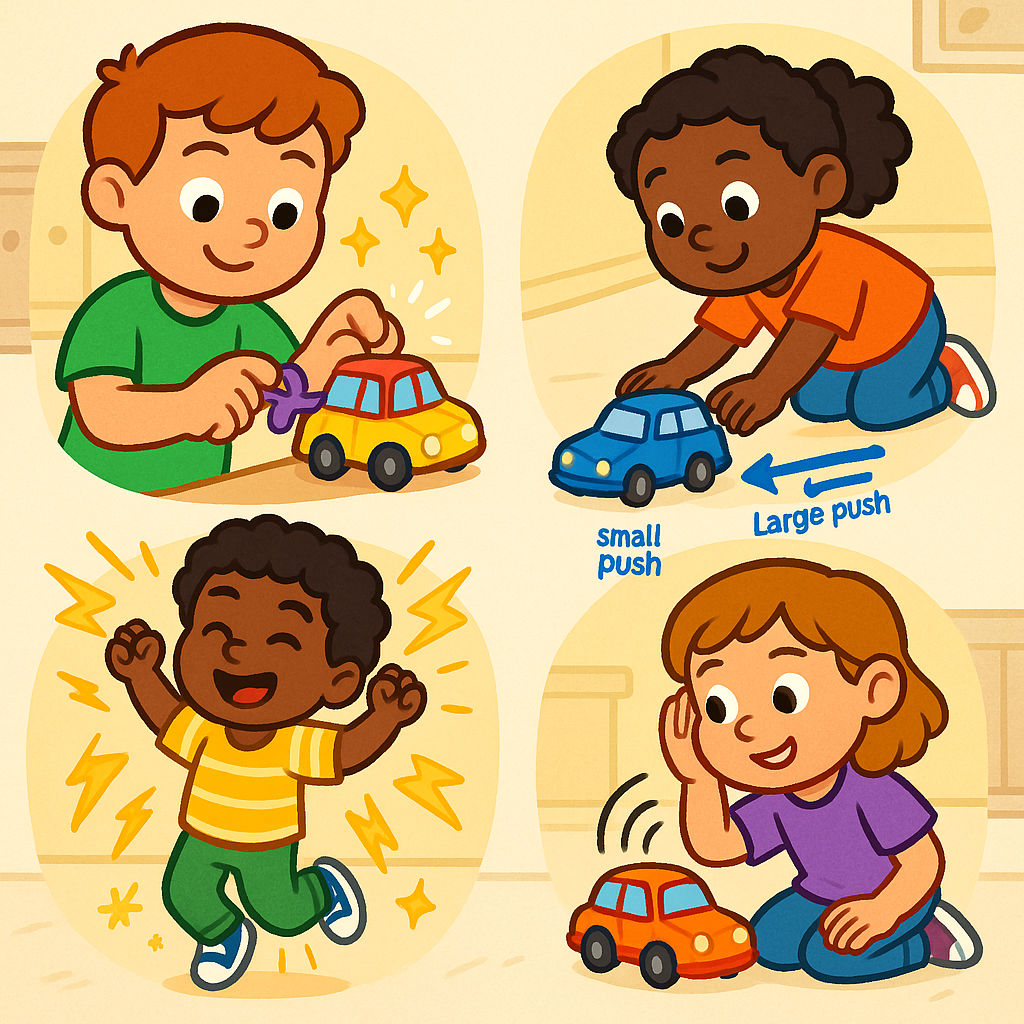How Race Cars Get their Zrrrum!
Race cars are energy machines.
They gobble up fuel or electricity...
and turn it into SPEED! ZRRRUMMMM!
🍎Your Body vs. a Race Car
Just like you need food for energy, race cars need fuel or electricity!
When you eat breakfast, your body changes food into energy so you can run and play. ZRRRUM!
Race cars work the same way! They "eat" gasoline or electricity and change it into the energy that spins their wheels super fast.
Without that energy change, a race car is just a fancy toy sitting still. With it — ZRRRUM— it's a speed machine!
🔥Gas Cars = Tiny Explosions!
Most race cars use gasoline. Inside the engine, something amazing happens — tiny explosions!
The gas mixes with air and — BOOM! — it explodes (safely!) inside special chambers called cylinders. These mini-explosions happen hundreds of times every second!
Each explosion pushes a metal piece called a piston, and all those pushes spin the wheels. The more explosions, the faster the car goes. That's why race car engines are SO loud — it's the sound of power being born!
🐌 Slow Explosions
Family cars have smaller engines with fewer explosions per second — perfect for trips to the store!
🚀 Fast Explosions
Race cars have HUGE engines with thousands of explosions per second — built for SPEED!
⚡Electric Cars = Battery Power!
Some race cars are electric — they use big batteries instead of gas. No explosions needed!
The battery stores electricity, kind of like a giant rechargeable toy. When the driver hits the gas pedal (even though there's no gas!), electricity zooms from the battery to special motors.
These motors spin instantly — no waiting! That's why electric race cars can go from 0 to fast in the blink of an eye. They're whisper-quiet too, like a superhero sneaking up on bad guys!
🏎️The Energy Journey
Here's the cool part: energy never disappears — it just changes form!
Gas cars: Chemical energy (in fuel) → Heat energy (from explosions) → Motion energy (spinning wheels) → SPEED!
Electric cars: Chemical energy (in batteries) → Electrical energy → Motion energy (spinning wheels) → SPEED!
Both paths get to the same awesome place: a car flying around the track at 200 miles per hour!
🧪Try This at Home
Wind up a toy car and let it go. Your twisting motion gave it stored energy that turned into motion — just like a battery!
Jump up and down 10 times, then feel your heartbeat. That's your body changing food energy into motion energy. You're like a race car engine!
Push a toy car gently, then push it hard. More energy = more speed! That's why race cars need so much fuel or electricity.
Listen to a real car engine start up. Can you hear it working? That's the sound of energy changing from fuel into power!







